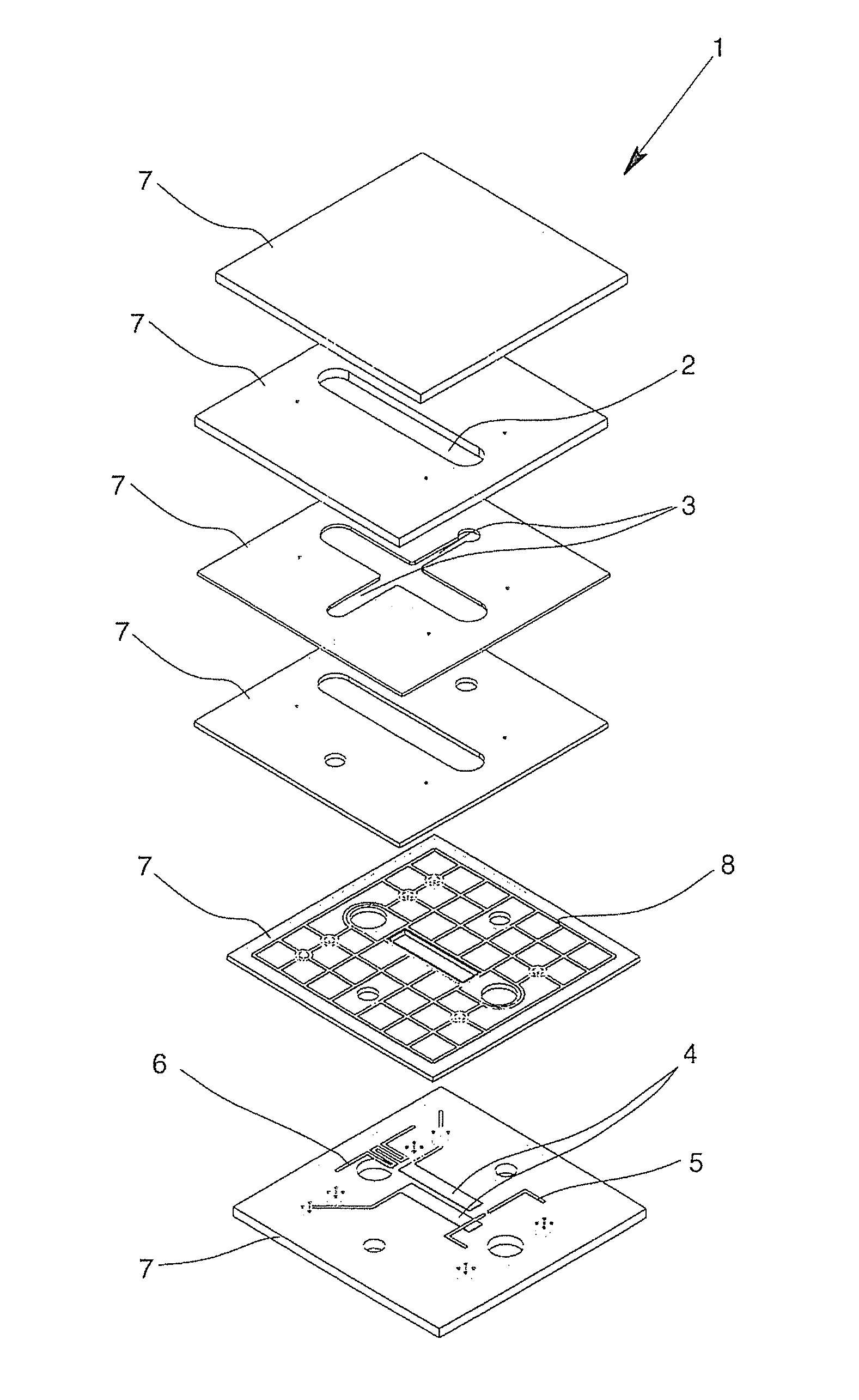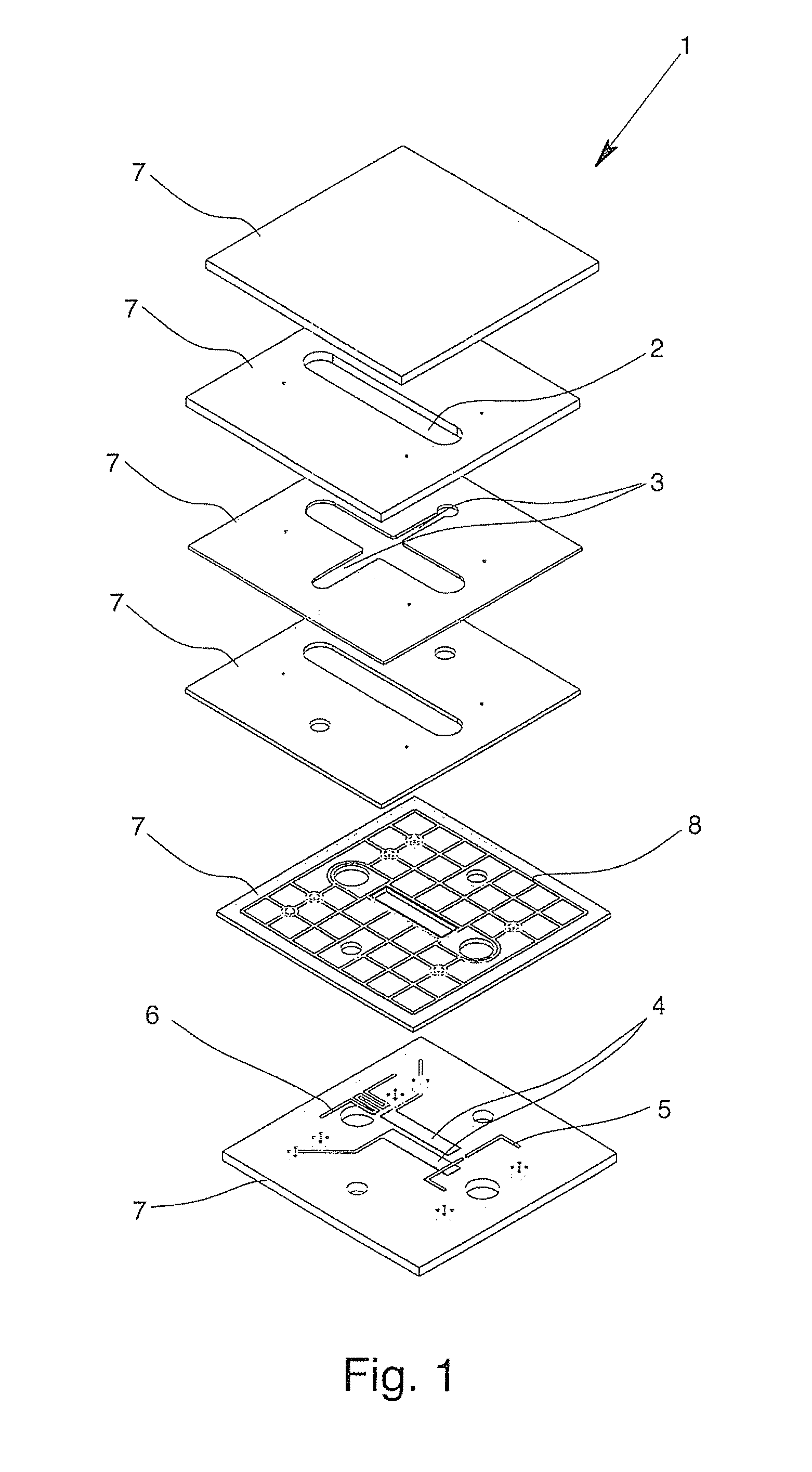Method for the production of a flame ionization detector and corresponding flame ionization detector
- Summary
- Abstract
- Description
- Claims
- Application Information
AI Technical Summary
Benefits of technology
Problems solved by technology
Method used
Image
Examples
Embodiment Construction
[0028]In an exploded view, FIG. 1 shows a flame ionization detector 1 that has six planes or six blocks and that is configured in particular as a μFID. The combustion chamber 2, in which the sample to be examined is ionized in a hydrogen flame, is located centrally. Channels 3 are used to supply combustion gas or oxidizing agent and then also to drain off the combustion gas, and said channels empty via so-called nozzles into the combustion chamber 2.
[0029]The ion stream is measured by the electrode structure 4 as part of the electrically conductive or in particular metal structure with a measuring electrode and a counter-electrode and in particular preferably also a protective electrode 8 by an electrical voltage being applied to the measuring electrode and the counter-electrode. The measured stream allows an assessment of the concentration of a certain substance in the medium that is to be examined.
[0030]For production of the flame, an ignition device 5 is also provided. In additio...
PUM
| Property | Measurement | Unit |
|---|---|---|
| Temperature | aaaaa | aaaaa |
| Temperature | aaaaa | aaaaa |
| Temperature | aaaaa | aaaaa |
Abstract
Description
Claims
Application Information
 Login to View More
Login to View More - R&D
- Intellectual Property
- Life Sciences
- Materials
- Tech Scout
- Unparalleled Data Quality
- Higher Quality Content
- 60% Fewer Hallucinations
Browse by: Latest US Patents, China's latest patents, Technical Efficacy Thesaurus, Application Domain, Technology Topic, Popular Technical Reports.
© 2025 PatSnap. All rights reserved.Legal|Privacy policy|Modern Slavery Act Transparency Statement|Sitemap|About US| Contact US: help@patsnap.com



